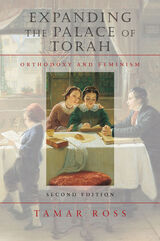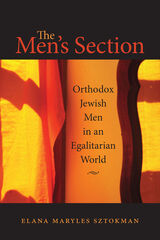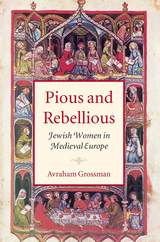3 books about Women (Jewish law)

Expanding the Palace of Torah
Orthodoxy and Feminism
Tamar Ross
Brandeis University Press, 2004
Expanding the Palace of Torah offers a broad philosophical overview of the challenges the women’s revolution poses to Orthodox Judaism, as well as Orthodox Judaism’s response to those challenges. Writing as an insider—herself an Orthodox Jew—Tamar Ross confronts the radical feminist critique of Judaism as a religion deeply entrenched in patriarchy. Surprisingly, very little work has been done in this area, beyond exploring the leeway for ad hoc solutions to practical problems as they arise on the halakhic plane. In exposing the largely male-focused thrust of the rabbinic tradition and its biblical grounding, she sees this critique as posing a potential threat to the theological heart of traditional Judaism—the belief in divine revelation.
This new edition brings this acclaimed and classic text back into print with a new essay by Tamar Ross which examines new developments in feminist thought since the book was first published in 2004.
This new edition brings this acclaimed and classic text back into print with a new essay by Tamar Ross which examines new developments in feminist thought since the book was first published in 2004.
[more]

The Men's Section
Orthodox Jewish Men in an Egalitarian World
Elana Maryles Sztokman
Brandeis University Press, 2011
In this illuminating book, Elana Maryles Sztokman investigates a fascinating new sociological phenomenon: Orthodox Jewish men who connect themselves to egalitarian or quasi-egalitarian religious enterprises. She examines the men who have enabled these transitions by constituting the requisite ten-man prayer quorum of Orthodoxy. By participating in “Partnership Minyanim,” these men support the reconstruction of both male and female roles without leaving the Orthodox religious world. Sztokman interrogates the ideologies and motivations of more than fifty such men in the United States, Israel, and Australia. Beginning with the “Orthodox Man Box” of conventionally constructed male behavior, she explores their struggles to navigate individualism and conformity, tradition and change. Setting their experiences in the context of gender role construction in traditional and contemporary synagogues, she shows how, for example, changes in leadership in Partnership Minyanim facilitate a fresh approach to liturgical expression, offering the possibility of reforming how modern Orthodox Jews attend services and pray.
[more]

Pious and Rebellious
Jewish Women in Medieval Europe
Avraham Grossman
Brandeis University Press, 2004
This volume, an amazing act of historical recovery and reconstruction, offers a comprehensive examination of Jewish women in Europe during the High Middle Ages (1000–1300). Avraham Grossman covers multiple aspects of women’s lives in medieval Jewish society, including the image of woman, the structure of the family unit, age at marriage, position in family and society, her place in economic and religious life, her education, her role in family ceremonies, violence against women, and the position of the divorcée and the widow in society. Grossman shows that the High Middle Ages saw a distinct improvement in the status of Jewish women in Europe relative to their status during the Talmudic period and in Muslim countries. If, during the twelfth century, rabbis applauded women as "pious and pure" because of their major role in the martyrdom of the Crusades of 1096, then by the end of the thirteenth century, rabbis complained that women were becoming bold and rebellious. Two main factors fostered this change: first, the transformation of Jewish society from agrarian to "bourgeois," with women performing an increasingly important function in the family economy; and second, the openness toward women in Christian Europe, where women were not subjected to strict limitations based upon conceptions of modesty, as was the case in Muslim countries. The heart of Grossman’s book concerns the improvement of Jewish women’s lot, and the efforts of secular and religious authorities to impede their new-found status. Bringing together a variety of sources including halakhic literature, biblical and talmudic exegesis, ethical literature and philosophy, love songs, folklore and popular literature, gravestones, and drawings, Grossman’s book reconstructs the hitherto unrecorded lives of Jewish women during the Middle Ages.
[more]
READERS
Browse our collection.
PUBLISHERS
See BiblioVault's publisher services.
STUDENT SERVICES
Files for college accessibility offices.
UChicago Accessibility Resources
home | accessibility | search | about | contact us
BiblioVault ® 2001 - 2024
The University of Chicago Press









